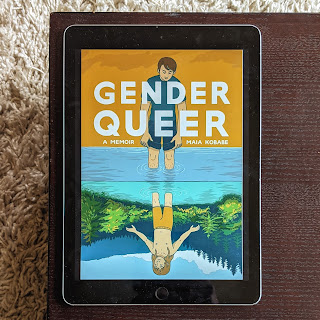Review: Rouge by Mona Awad
My Quick Take: Full of so many interesting ideas and themes, with bits of brilliance, this dream-like horror-esque novel didn’t hit me hard like I wished it would.
Thanks to Penguin Random House Canada and Netgalley for a gifted digital copy in exchange for my unbiased review.
***
Rouge is the fourth novel by brilliant writer Mona Awad that I’ve read this year, and I’ve really liked the first three. They’ve all been for my feminist-themed book club and each has provoked a lively discussion with no shortage of thematic interpretations. The books tend to be polarizing in our group, with some loving her style and some not so much.
Rouge is another strong offering from Awad, and to me it is most akin to Bunny (much beloved by many!), but moves the action more internally, inhabiting main character Mirabelle Noor, daughter of a White, French-Canadian mother and an Egyptian father. This time, the heart of the novel resides at Rouge, an exclusive, mysterious skin-care spa in a mansion on the California coast.
Cue the amazing imagery of an Awad novel, the deep exploration of fairytale and myth, the longing to escape oneself and be something else–or someone else, or something perfect and untouchable–and free from this world of pain and angst. The novel is bathed in red, white and black, and infused with fairytale references, most notably Snow White. Mirrors, mirrors everywhere. It teems with the pain of being othered, brown-skinned in a world that values whiteness, and never being able to attain the unconditional positive regard of one’s mother.
As I write this, the words come so easily, because the novel is rich and invites deep interpretation and thought. There’s so much to get lost in, and I suspect this will appeal to many readers. What will be exciting to some is where I got tripped up with the novel: in the reading experience. I wish my experience reading it was as fantastic as the themes it presented, as fascinating as the red, bloody beating heart of it could have been. Some parts were gripping, but I slogged through the middle third. There were too many words and a bit of repetition that I didn’t need; this slightly bloated quality slowed the novel down too much for me. The dreamy quality worked at first, then became excessively dreamy for my taste. I wanted to push the narrative forward. I craved more precision from the prose to keep my attention and make the themes hit harder for me. Can there be too many themes and fairy-tale references? Perhaps yes, because for me the overall message got a bit lost. I needed Awad to wield a fine brush at times rather than use a splatter-paint technique.
The ending really picked up and finished strong, and I was left wondering if I could identify an overarching theme here. Awad gave me a clue near the end that put the novel in more perspective. Mirabelle is talking to handyman Tad, who loved her mother:
“Grief is a journey,” he says. “And everyone has their own way, you know?”
Rouge is so deep that one could write pages and pages of literary interpretation. In the end I think it may be about mothers and daughters and the inevitable disconnect. Mirabelle was probably grieving the loss of her mother in different ways throughout her whole life, always seeing herself as a reflection of her unattainable mother. The spa at Rouge was a critical working through. It was a personal journey, but I didn’t really see it until the end. I would have enjoyed my own journey through the book more if there had been a clearer pathway.
“Many twists and turns of color. Magic, really. Like a fairy tale. It begins with a pinkening of the clouds. Then a reddening, so that they look like the underbellies of some great fish. Then a bluing, which can go on awhile, giving way at last to starry black. Then you can hear the water but not see it. You can only see yourself in the glass, looking out.”***
Rather unexpectedly, then, I’ve read all of Mona Awad’s novels this year, and I am counting 13 Ways of Looking at a Fat Girl as a novel rather than a “collection.” It’s been a wonderful exploration of this exciting, Canadian contemporary novelist. Her work showcases what I see as an example of a provocative and skilled writer who tackles big ideas fearlessly, grabbing the reader by the teeth and shaking them up. I’d rank them in order of my most to least favourite:
- All’s Well: Here’s the scalpel I want Awad to wield!
- 13 Ways of Looking at a Fat Girl: As relatable as it was uncomfortable.
- Bunny: So confusing but a pretty fun ride, though tending to be a bit slow in the middle
- Rouge: Full of potential and profound themes, but the execution fell short for me.
I have no doubt at all that I’ll be reading Mona Awad’s next book as soon as it hits the press.



Comments
Post a Comment